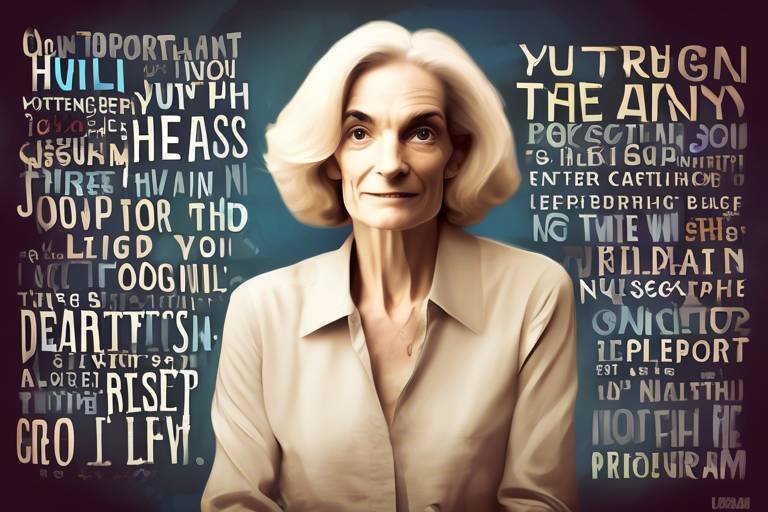The Taoist Philosophy of Lao-tzu - An Overview
The philosophy of Taoism, as articulated by the ancient sage Lao-tzu, offers a profound lens through which we can view the world around us. At its core, Taoism emphasizes the importance of living in harmony with the Tao, or "the Way," which serves as the ultimate source of all existence. Imagine navigating through life as if you were flowing down a river; the Tao is that river, guiding you effortlessly towards your destination. This article will delve into the essence of Lao-tzu's teachings, shedding light on the principles of harmony, balance, and the natural order that define his philosophy.
In a world often characterized by chaos and noise, the wisdom of Lao-tzu reminds us to pause and reflect on our connection to nature and the universe. His teachings encourage us to embrace simplicity and authenticity, suggesting that true fulfillment comes not from striving or forcing outcomes, but from aligning ourselves with the natural rhythms of life. Think of it like dancing; when you are in sync with the music, the movements become fluid and effortless. This article will explore the foundational concepts of Taoism, providing insights that can enhance our understanding of ourselves and the world we inhabit.
As we embark on this exploration, we will uncover the historical roots of Taoism, the significance of the Tao and Wu Wei, and the invaluable lessons nature has to offer. Each section will unravel the intricacies of Lao-tzu's philosophy, revealing how these ancient teachings remain relevant in our modern lives. Prepare to discover a philosophy that not only enlightens the mind but also nourishes the spirit, guiding us towards a more harmonious existence.
Taoism originated in ancient China, rooted in the teachings of Lao-tzu, whose name translates to "Old Master." Historical records suggest that Lao-tzu lived around the 6th century BCE, a time marked by significant philosophical development in China. The cultural influences of Confucianism, Buddhism, and local folk traditions played a pivotal role in shaping Taoist thought.
The foundational text of Taoism, the Tao Te Ching, attributed to Lao-tzu, is a concise yet profound work that encapsulates the essence of his teachings. It consists of 81 short chapters, each rich with metaphor and wisdom. The text encourages readers to seek simplicity, humility, and a deep connection with the natural world.
Central to Taoism are the concepts of the Tao (the Way) and Wu Wei (non-action). These ideas are not merely philosophical abstractions; they are practical guidelines for living a balanced and fulfilling life. In the following sections, we will explore these fundamental concepts in detail, examining their implications for everyday life and spirituality.
The Tao represents the ultimate principle of the universe in Taoism. It is the source of all things, the path that one follows, and the ultimate truth that transcends human understanding. Imagine the Tao as a vast ocean, where every drop of water contributes to the whole. It is both the journey and the destination, a reminder that life is not just about reaching goals but also about the experiences we gather along the way.
Understanding the nature of the Tao is key to grasping Taoist philosophy. The Tao is often described as formless, elusive, and beyond description. It cannot be fully understood through intellectual reasoning; instead, it must be experienced. Lao-tzu famously states, "The Tao that can be told is not the eternal Tao." This paradox invites us to embrace the mystery of existence and to appreciate the beauty found in uncertainty.
Living in harmony with the Tao leads to a fulfilling life. This involves recognizing and respecting the natural order of things, allowing life to unfold without unnecessary interference. Practical ways to align one's life with the Tao's principles include:
- Practicing mindfulness and being present in the moment.
- Embracing simplicity and letting go of material excess.
- Listening to your intuition and following your natural inclinations.
By adopting these practices, individuals can cultivate a sense of peace and balance, ultimately leading to a more enriched life.
Wu Wei, or non-action, is a crucial aspect of Taoism. This concept does not advocate for inactivity; rather, it emphasizes the importance of taking action that is in alignment with the natural flow of life. It’s about finding the sweet spot where effort meets ease, allowing things to unfold organically. Think of it as a dance; when you let go of rigid steps and move with the rhythm, you become part of something greater.
Nature plays a vital role in Taoist philosophy. Observing and respecting the natural world can enhance one's understanding of the Tao. Lao-tzu believed that nature is a reflection of the Tao, embodying its principles in every aspect of existence. By immersing ourselves in nature, we can learn invaluable lessons about balance, resilience, and interconnectedness.
Nature serves as a teacher in Taoism. From the resilience of a tree bending in the wind to the patient flow of a river carving its path through rock, natural phenomena offer profound insights into how we can navigate our own lives. Some lessons include:
- Adaptability: Just as nature adapts to changing seasons, we too must learn to be flexible in the face of life's challenges.
- Interconnectedness: Every element in nature is connected, reminding us of our relationships with others and the world around us.
- Balance: Nature thrives on balance; understanding this can help us find equilibrium in our own lives.
Taoism offers valuable insights for personal growth. By embracing its principles, individuals can embark on a journey of self-discovery and achieve inner peace. The teachings of Lao-tzu encourage us to look within, fostering a deeper connection with ourselves and the world.
Various practices rooted in Taoism can aid in personal development. For instance, meditation allows individuals to quiet their minds and connect with the Tao, while Tai Chi promotes physical health and mental clarity. Engaging in these practices can lead to a greater sense of well-being and a more harmonious life.
- What is the main goal of Taoism? The main goal of Taoism is to live in harmony with the Tao, fostering balance and peace in one's life.
- How can I incorporate Taoist principles into my daily life? You can incorporate Taoist principles by practicing mindfulness, simplifying your life, and respecting the natural world.
- Is Taoism a religion? Taoism can be seen as both a philosophy and a religion, depending on how individuals choose to engage with its teachings.
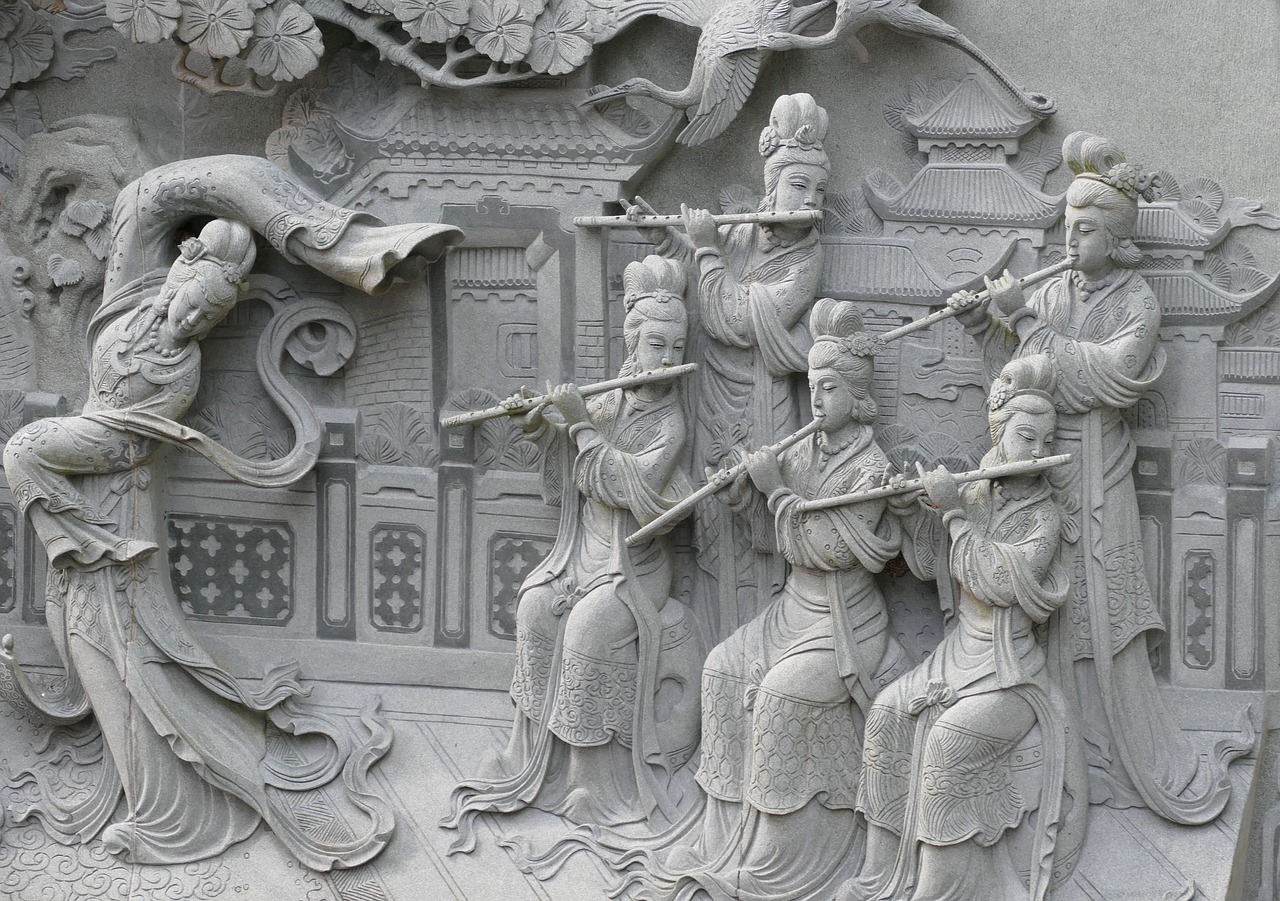
Origins of Taoism
Taoism, one of the most influential philosophical systems in China, traces its roots back to the enigmatic figure of Lao-tzu, who is believed to have lived during the 6th century BCE. But what exactly led to the emergence of this profound philosophy? To understand the origins of Taoism, we need to explore the historical and cultural tapestry of ancient China, where spiritual and philosophical thought was flourishing.
During this period, China was a land of diverse beliefs and practices. The Warring States period, a time marked by conflict and social upheaval, created a fertile ground for new ideas. People were searching for answers to life's fundamental questions: What is the nature of existence? How can one live in harmony with others and the universe? It was in this context that Lao-tzu's teachings began to take shape, emphasizing the importance of balance and harmony.
The foundational text of Taoism, the Tao Te Ching, is attributed to Lao-tzu and serves as a guide to understanding the principles of the Tao, or "the Way." This text is not just a philosophical treatise; it is a poetic exploration of the universe's nature and our place within it. The simplicity and depth of its verses resonate with readers even today, reflecting the timelessness of Lao-tzu's insights.
Moreover, Taoism was influenced by earlier Chinese traditions, such as Shamanism and Folk Religion, which emphasized a connection to nature and the spiritual world. These early beliefs laid the groundwork for Taoist thought, which would later integrate elements of Confucianism and Buddhism as it evolved over centuries. The interplay between these philosophies enriched Taoism, allowing it to adapt and thrive in various cultural contexts.
In essence, the origins of Taoism are deeply intertwined with the history and culture of ancient China. It emerged as a response to the social challenges of its time, offering a path towards tranquility and understanding. As we delve deeper into the core concepts of Taoism, we will see how these early influences shaped its teachings and continue to inspire individuals seeking a harmonious way of life.
To summarize, the origins of Taoism can be viewed through the following key influences:
- Lao-tzu: The central figure whose teachings form the basis of Taoism.
- Warring States Period: A time of conflict that prompted philosophical exploration.
- Tao Te Ching: The foundational text encapsulating Taoist philosophy.
- Earlier Traditions: Influences from Shamanism and Folk Religion that shaped Taoist thought.
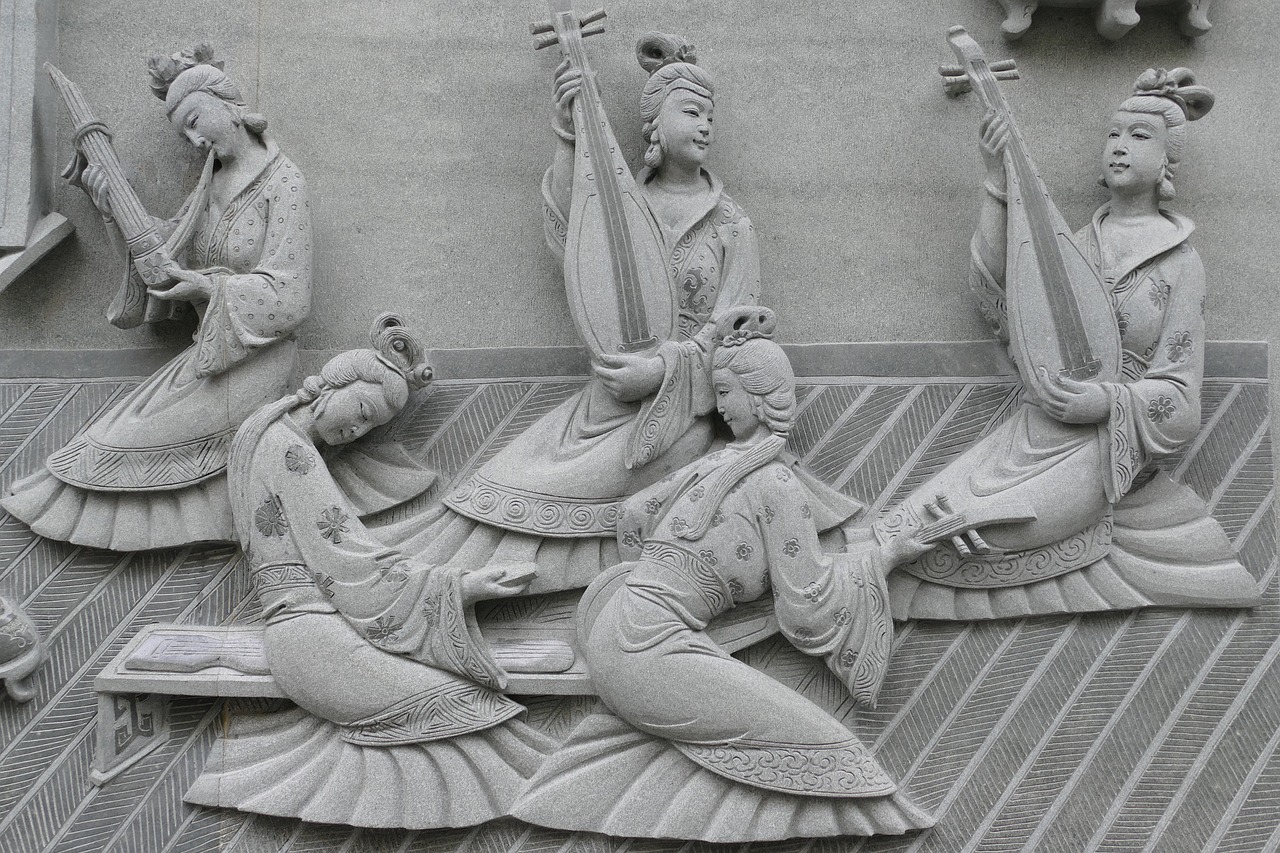
Key Concepts of Taoism
At the heart of Taoism lie several key concepts that define its philosophy and guide its followers toward a harmonious existence. Two of the most fundamental ideas are The Tao and Wu Wei. Understanding these principles is like discovering the secret map to navigate the vast landscape of life. They offer profound insights into how we can live in alignment with the universe and experience true peace and fulfillment.
The concept of The Tao, often translated as "The Way," represents the ultimate principle that governs the cosmos. Imagine it as the river that flows through the mountains, carving its path effortlessly while adapting to the landscape. To grasp the essence of the Tao is to recognize that it is both the source and the destination of all existence. It's a reminder that life is not about forcing our will upon the world, but rather about discovering the natural flow of things.
Delving deeper into the nature of the Tao, we find that it is characterized by its formlessness and eternity. It transcends the dualities of existence, such as good and bad, or right and wrong. This non-dualistic view encourages us to embrace the complexities of life without being confined by rigid judgments. When we acknowledge the Tao, we begin to see that every experience, whether joyful or painful, contributes to our journey.
Living in accordance with the Tao involves a conscious effort to align our actions with this natural order. It’s about tuning into the rhythms of life, much like a musician harmonizes with the melody of a song. By doing so, we cultivate a sense of balance and tranquility. Here are some practical ways to live in accordance with the Tao:
- Practice mindfulness and be present in the moment.
- Embrace simplicity and let go of unnecessary complexities.
- Seek harmony in relationships and interactions with others.
- Observe the natural world and learn from its cycles.
On the other hand, Wu Wei, which translates to "non-action," is another critical aspect of Taoism. It's not about being passive or lazy; rather, it's about engaging in life without forceful effort. Picture a skilled dancer who moves gracefully across the stage, responding to the music rather than trying to control it. This principle teaches us that sometimes, the best action is to allow things to unfold naturally.
Embracing Wu Wei can lead to a state of effortless living. When we stop resisting the flow of life, we often find that solutions to our problems arise spontaneously. It's like a leaf floating down a stream, effortlessly navigating obstacles without struggle. By practicing Wu Wei, we learn to trust the process and understand that life often works out in ways we could never have planned.
In summary, the key concepts of Taoism—The Tao and Wu Wei—invite us to explore a path of harmony and balance. They encourage us to observe the world around us, embrace the flow of life, and align our actions with the natural order of the universe. By integrating these principles into our daily lives, we can cultivate a deeper sense of peace and fulfillment.

The Tao (The Way)
The concept of the Tao, often translated as "The Way," is the cornerstone of Taoist philosophy. Imagine the Tao as a vast river, flowing effortlessly through the landscape of existence. It's not just a path; it represents the ultimate principle that governs the universe. When we talk about the Tao, we're diving deep into the essence of life itself, exploring how everything is interconnected. This idea isn't just abstract; it's profoundly practical, offering guidance on how we can live harmoniously with the world around us.
At its core, the Tao embodies the natural order of the universe. It’s like the rhythm of a song; when everything is in sync, it creates a beautiful harmony. But what does it mean to follow the Tao? It's about aligning ourselves with this rhythm, understanding that we are part of something much larger than ourselves. Just as a tree grows towards the sun, we too should seek to grow in accordance with the natural flow of life.
One of the fascinating aspects of the Tao is its formlessness. It cannot be defined or confined to specific rules or doctrines. The Tao Te Ching, the foundational text of Taoism attributed to Lao-tzu, emphasizes this by stating that the Tao that can be told is not the eternal Tao. This paradox invites us to embrace uncertainty and to find comfort in the unknown. Just as water takes the shape of its container, we must learn to adapt and flow with the circumstances of our lives.
Living in accordance with the Tao means recognizing the importance of balance. Think about the yin and yang symbol, which represents the duality of existence. It teaches us that opposites are interconnected and interdependent. Light cannot exist without darkness, just as joy cannot exist without sorrow. By acknowledging this balance, we can navigate life's challenges with grace and resilience.
So, how can we apply the teachings of the Tao in our daily lives? Here are a few practical ways:
- Mindfulness: Being present in the moment allows us to connect with the flow of the Tao. Whether it's enjoying a meal or taking a walk, mindfulness helps us appreciate the beauty around us.
- Acceptance: Embracing situations as they are, rather than how we wish they would be, fosters a sense of peace. This acceptance is a key aspect of living in harmony with the Tao.
- Letting Go: Sometimes we hold onto things too tightly, whether they are material possessions or emotional baggage. Learning to let go allows us to flow with life’s currents.
In essence, the Tao is not a destination but a journey. It invites us to explore and discover our path, guiding us towards a life filled with purpose and meaning. By understanding the Tao and integrating its principles into our lives, we can cultivate a deeper sense of harmony and connection with the world.
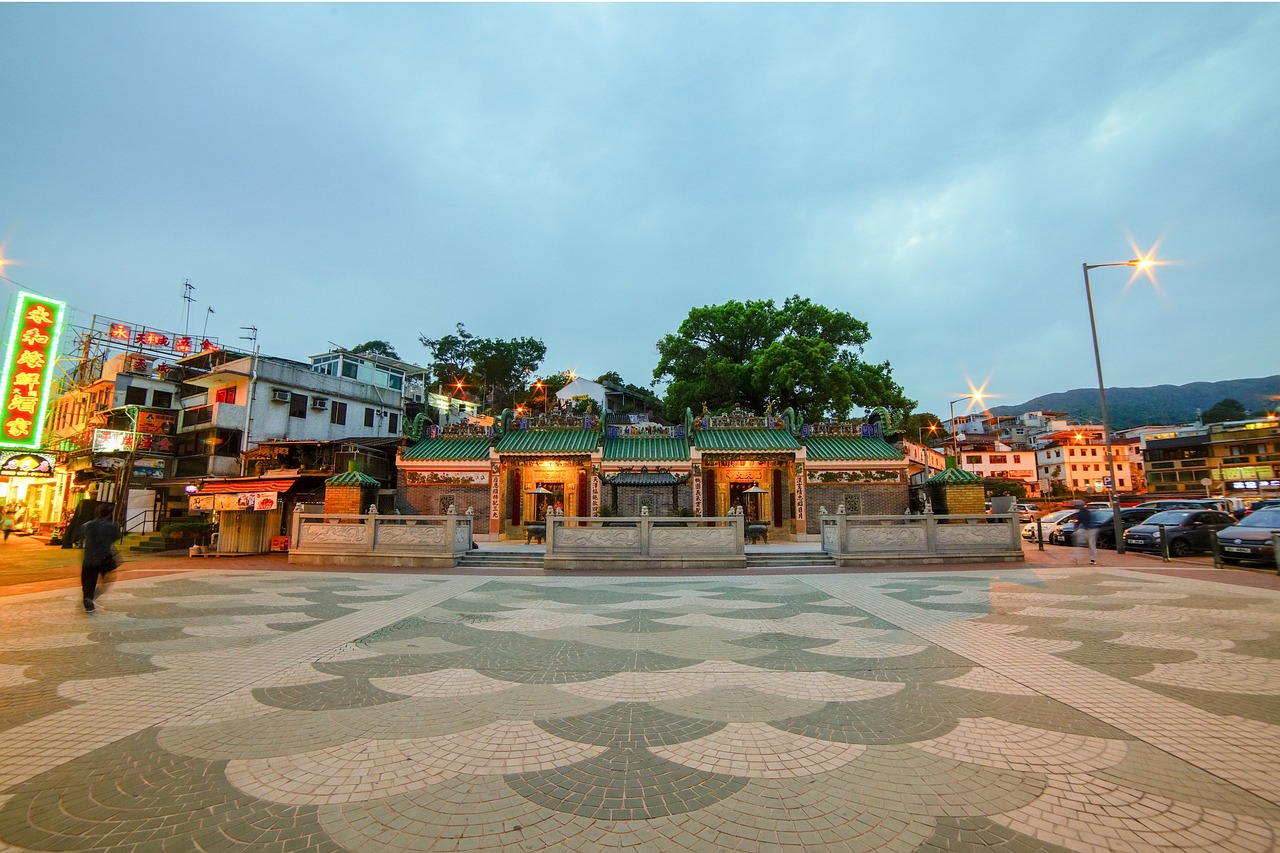
The Nature of the Tao
The concept of the Tao is often described as the *ultimate principle* of the universe, a force that flows through all things. Imagine a river: it meanders through valleys, carves mountains, and nourishes the land, yet it remains unchanged in its essence. This metaphor beautifully encapsulates the nature of the Tao—ever-present, fluid, and ungraspable. The Tao is not something that can be defined or fully understood; it is a mystery that invites exploration and contemplation. It is both the source and the destination, the journey and the endpoint.
One of the most fascinating aspects of the Tao is its formlessness. Unlike rigid doctrines or dogmas, the Tao is adaptable and transcends boundaries. Just as water takes on the shape of its container, the Tao embodies the principle of flexibility. This formlessness allows it to be present in all aspects of life, from the grand cosmos to the minutiae of daily existence. It teaches us that to understand the Tao, we must embrace uncertainty and let go of the need for control.
In Taoism, the characteristics of the Tao can be summarized as follows:
- Natural: The Tao reflects the natural order of the universe, emphasizing that everything is interconnected.
- Dynamic: It is constantly in motion, representing the ebb and flow of life.
- Non-judgmental: The Tao does not impose values or judgments; it simply exists.
To truly grasp the nature of the Tao, one must also consider its role in the cosmos. The Tao is often described as the *mother of all things*, the source from which everything emerges. It is the underlying essence that binds the universe together, promoting harmony and balance. This interconnectedness is critical in Taoist philosophy, as it encourages individuals to see themselves as part of a larger whole. By recognizing that we are intricately linked to the world around us, we can cultivate a deeper sense of respect and appreciation for life.
Living in accordance with the Tao means aligning our actions with this natural flow. It invites us to observe the rhythms of nature, to listen to the whispers of the wind, and to find wisdom in the changing seasons. For instance, consider how trees shed their leaves in autumn, only to bloom again in spring. This cycle of letting go and renewal mirrors our own lives, reminding us that sometimes we must release what no longer serves us to make way for new growth.
Ultimately, understanding the nature of the Tao is about embracing the journey of life with an open heart and mind. It encourages us to be present, to appreciate the beauty in simplicity, and to find joy in the act of living. By cultivating this awareness, we can navigate the complexities of existence with grace and ease, allowing the Tao to guide us toward a more fulfilling and harmonious life.
What is the Tao?
The Tao is the fundamental principle of the universe in Taoism, representing the natural order and flow of life.
How can I live in accordance with the Tao?
Living in accordance with the Tao involves observing nature, embracing flexibility, and aligning your actions with the natural flow of life.
Why is the Tao considered formless?
The Tao is considered formless because it transcends definitions and rigid structures, embodying a fluid and adaptable essence.

Living in Accordance with the Tao
Living in accordance with the Tao is like dancing with the rhythm of life itself. Imagine a river flowing effortlessly, carving its path through the landscape. This is how we should approach our existence—flowing with the natural currents rather than fighting against them. When we align ourselves with the Tao, we tap into a profound sense of peace and fulfillment that often eludes those who resist the natural order of things.
To live in harmony with the Tao, it's essential to cultivate an awareness of our surroundings and our inner selves. This means taking the time to observe the world around us, just as a painter studies the light and shadows before putting brush to canvas. By immersing ourselves in nature, we can learn invaluable lessons about balance, patience, and the interconnectedness of all things. Whether it's watching the leaves rustle in the wind or listening to the gentle sound of water flowing in a stream, these moments can ground us and remind us of our place in the universe.
Furthermore, embracing the concept of Wu Wei, or non-action, plays a vital role in living according to the Tao. This doesn’t mean being passive or lazy; rather, it encourages us to act in a way that is effortless and spontaneous. Think of it as riding a wave—when you learn to go with the flow, you can navigate the challenges of life with grace and ease. This principle teaches us that sometimes the best action is to step back, observe, and allow things to unfold naturally.
In practical terms, living in accordance with the Tao can involve several daily practices:
- Mindfulness: Cultivating mindfulness helps us stay present and aware, allowing us to respond to life’s situations with clarity and calmness.
- Gratitude: Practicing gratitude shifts our focus from what we lack to what we have, aligning us more closely with the abundance of the universe.
- Simplicity: Embracing simplicity in our lives can reduce stress and clutter, making space for the things that truly matter.
Additionally, engaging in activities that promote connection with nature—like hiking, gardening, or simply spending time outdoors—can deepen our understanding of the Tao. These experiences remind us that we are part of a larger whole, encouraging us to live with intention and respect for the world around us.
Ultimately, living in accordance with the Tao is about finding balance and harmony within ourselves and with the universe. It's about recognizing that we are not separate from nature but rather an integral part of it. By embracing the principles of Taoism, we can lead more fulfilling lives, filled with joy, peace, and a profound sense of connection.
- What is the Tao? The Tao, often translated as "the Way," is the fundamental principle that underlies the universe and guides all things in their natural order.
- How can I practice Wu Wei? Practicing Wu Wei involves learning to act effortlessly and spontaneously, allowing situations to unfold naturally without force or struggle.
- Why is nature important in Taoism? Nature serves as a vital teacher in Taoism, offering insights into balance, harmony, and the interconnectedness of all life.
- Can Taoism help with personal development? Yes, Taoism provides valuable insights and practices that can aid in self-discovery, inner peace, and overall personal growth.
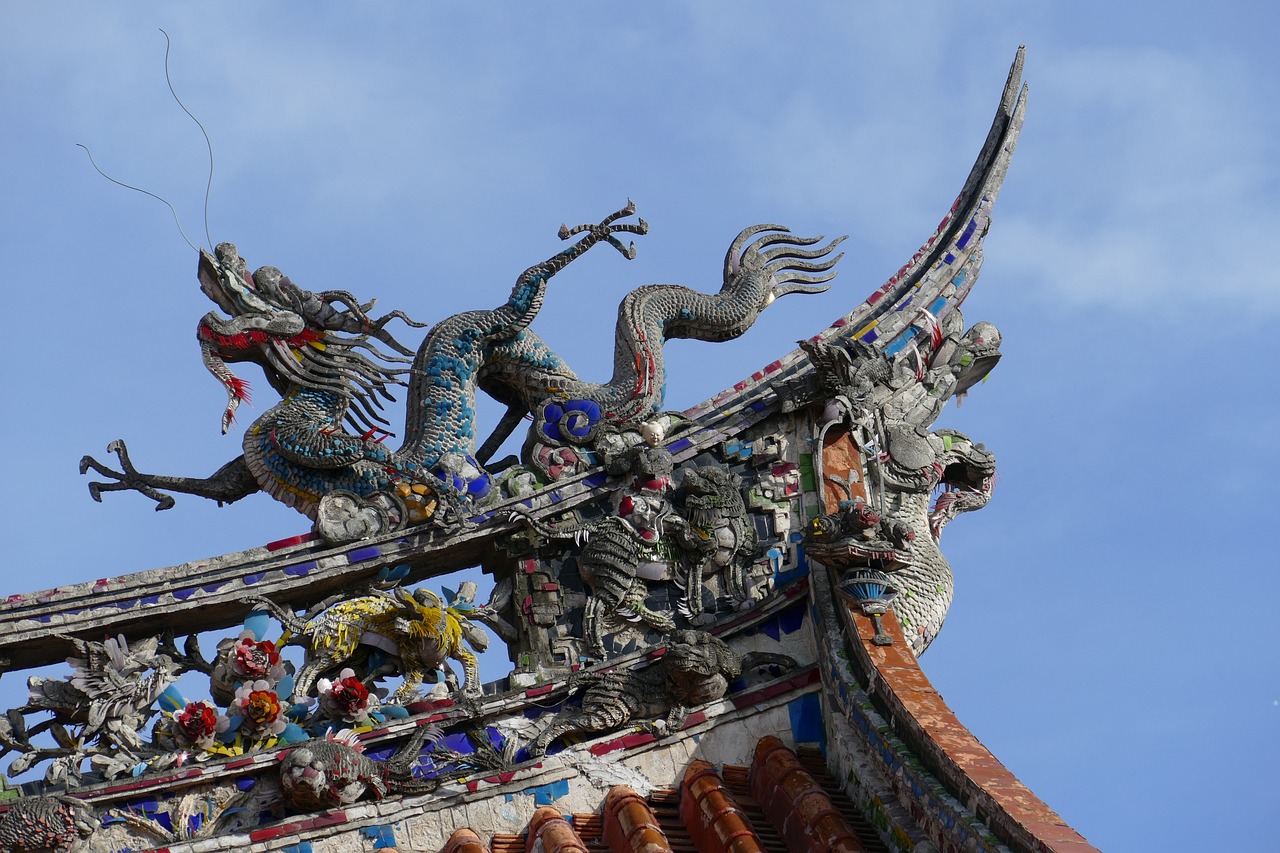
Wu Wei (Non-action)
When we hear the term Wu Wei, it might sound like an invitation to do nothing, but that's not quite the case. In fact, Wu Wei translates to "non-action" or "effortless action," and it's one of the most profound principles in Taoism. Imagine trying to swim upstream against a powerful current; it’s exhausting and often futile. Now, picture yourself floating with the flow of the river, allowing it to carry you effortlessly to your destination. This metaphor encapsulates the essence of Wu Wei—embracing the natural flow of life rather than resisting it.
In our fast-paced world, where we often feel the pressure to constantly strive and achieve, the concept of Wu Wei offers a refreshing perspective. It teaches us that sometimes, the best course of action is to step back and allow things to unfold as they naturally should. This doesn't mean being passive or lazy; rather, it encourages us to engage with life in a way that is aligned with the natural order of the universe. When we practice Wu Wei, we cultivate a sense of inner peace and harmony, allowing us to respond to situations with clarity and wisdom.
So, how can we incorporate Wu Wei into our daily lives? Here are a few practical tips:
- Practice Mindfulness: Being present in the moment allows you to recognize opportunities and challenges as they arise, enabling you to respond rather than react.
- Let Go of Control: Understand that not everything is within your control. Embrace uncertainty and trust the process.
- Flow with Change: Life is constantly changing, and resisting this change can lead to frustration. Instead, try to adapt and flow with it.
Embracing Wu Wei can lead to a more fulfilling and balanced life. It encourages us to trust in our instincts and the natural rhythms of the world around us. When we stop pushing against the current and start to move with it, we often find that our path becomes clearer and our burdens lighter. In this way, Wu Wei is not just a principle of Taoism but a practical philosophy that can enhance our everyday experiences.
As we delve deeper into the practice of Wu Wei, we might also discover that it opens the door to greater creativity and spontaneity. When we stop overthinking and allow our actions to arise naturally, we often tap into a wellspring of inspiration that leads to unexpected and delightful outcomes. Think of it like dancing; when you let go of your inhibitions and move with the music, the result is often far more beautiful than if you were to force each step.
Ultimately, Wu Wei invites us to trust in the process of life. It's a gentle reminder that sometimes, the most profound actions come from a place of stillness and awareness. So, the next time you find yourself feeling overwhelmed, remember the river and consider how you might align yourself with its flow.
What does Wu Wei mean in Taoism?
Wu Wei translates to "non-action" or "effortless action," emphasizing the importance of aligning with the natural flow of life instead of forcing outcomes.
How can I practice Wu Wei in my daily life?
You can practice Wu Wei by being mindful, letting go of the need to control everything, and flowing with the changes that life presents.
Is Wu Wei the same as being lazy?
No, Wu Wei is not about being passive or lazy. It's about engaging with life in a way that is harmonious and aligned with the natural order, allowing actions to arise effortlessly.

The Role of Nature in Taoism
In the tapestry of Taoism, nature is not just a backdrop; it is a vibrant, living entity that plays a pivotal role in understanding the Tao. Imagine walking through a lush forest, where every rustling leaf and babbling brook whispers secrets of the universe. This is the essence of Taoist philosophy—nature is both a teacher and a guide, illustrating the principles of balance and harmony that are central to this ancient wisdom. The natural world reflects the rhythms of existence, reminding us that we are not separate from it but rather an integral part of a larger whole.
The Taoists believe that by observing nature, we can learn invaluable lessons about life and our place within it. For instance, consider the way a river flows: it carves its path effortlessly, adapting to obstacles without force. This is a profound metaphor for living in accordance with the Tao. Just as the river finds its way, we too can navigate life's challenges with grace and ease when we embrace the natural flow of existence. Nature teaches us that resistance often leads to struggle, while acceptance can lead to profound peace.
Furthermore, nature embodies the concept of yin and yang, the dual forces that drive all things. The interplay of light and dark, growth and decay, is evident in every season and cycle. By recognizing these patterns, we can cultivate a deeper understanding of balance in our own lives. Just as winter gives way to spring, we must also embrace change as a natural part of our journey. The Taoist perspective encourages us to find beauty in this cycle, to appreciate the transient moments that shape our experiences.
To truly connect with nature, Taoists often engage in practices that foster this relationship. Activities such as hiking, gardening, or simply sitting quietly in a park allow us to immerse ourselves in the natural world. These moments of stillness and observation are where we can hear the whispers of the Tao. By tuning into the rhythms of nature, we can align ourselves with its wisdom, promoting a sense of inner peace and clarity.
In essence, the role of nature in Taoism is multifaceted. It serves as a source of inspiration, a means of understanding our place in the universe, and a pathway to personal growth. By respecting and honoring the natural world, we not only enrich our own lives but also contribute to the harmony of the greater cosmos. Just as the trees stand tall and the mountains endure, we too can find strength and resilience by embracing the lessons that nature has to offer.
As we delve deeper into the teachings of Taoism, it becomes clear that nature is not merely an external force; it is a reflection of our inner selves. By nurturing this connection, we can cultivate a life of balance, harmony, and profound understanding. So, the next time you step outside, take a moment to breathe in the beauty around you. Let nature guide you toward a deeper understanding of the Tao and your place within it.
Frequently Asked Questions
- What is the significance of nature in Taoism? Nature is viewed as a teacher and a reflection of the Tao, offering insights into balance and harmony.
- How can I connect with nature as part of my Taoist practice? Engaging in activities like hiking, gardening, or meditating outdoors can deepen your connection with nature.
- What are some lessons from nature that apply to everyday life? Observing the flow of a river or the changing seasons can teach us about adaptability and the importance of embracing change.
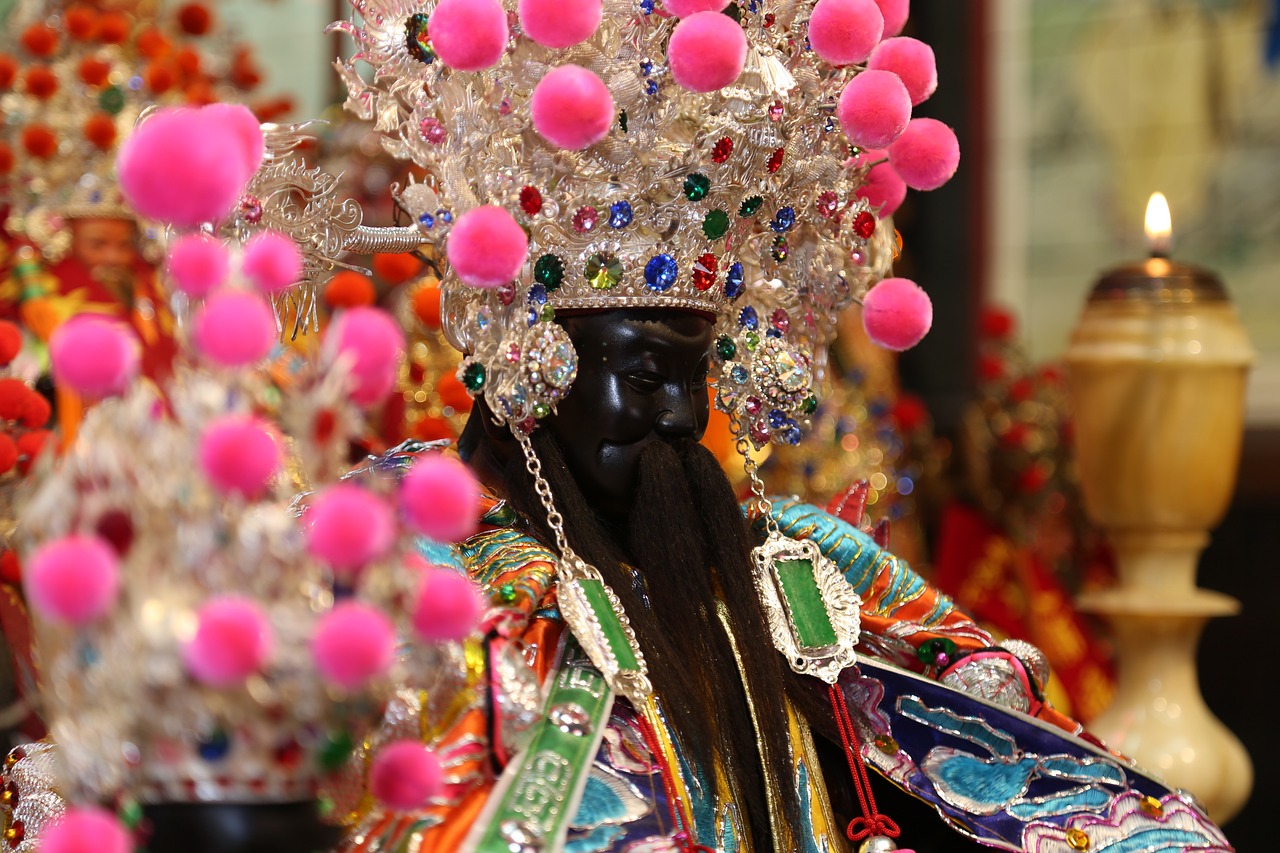
Lessons from Nature
Nature, in all its splendid forms, serves as a profound teacher in the realm of Taoism. It offers a treasure trove of lessons that resonate deeply with the principles of harmony and balance. Just think about it: when you observe a river flowing, it doesn’t struggle against the rocks; instead, it finds a way around them. This is a perfect metaphor for Wu Wei, or non-action, illustrating how we can navigate life's challenges with grace and ease. By learning from nature, we can cultivate a mindset that embraces adaptability and resilience.
One of the most significant lessons from nature is the concept of interconnectedness. Every element in the natural world is linked together, forming a complex web of life. For instance, consider how a tree provides oxygen for us to breathe, while we, in turn, produce carbon dioxide that nourishes the tree. This cyclical relationship teaches us that our actions have consequences, and living in harmony with others is essential for a balanced existence. By recognizing our place within this web, we can foster a sense of responsibility toward the environment and each other.
Moreover, the changing seasons exemplify the principle of impermanence. Just as winter gives way to spring, our lives are marked by cycles of growth, decay, and renewal. Embracing this natural rhythm can help us understand that change is not something to fear but rather an integral part of life. When we accept the inevitability of change, we can find peace in the present moment, letting go of attachments that weigh us down.
Nature also teaches us about patience. Take a seed, for example; it doesn’t sprout overnight. It requires time, nurturing, and the right conditions to grow into a strong plant. In our fast-paced world, we often rush our personal growth, seeking instant results. However, the lesson here is clear: true growth takes time, and by cultivating patience, we allow ourselves to develop naturally and fully.
Here are a few key lessons we can draw from nature:
- Flow with Life: Like water, adapt to your surroundings and find the path of least resistance.
- Embrace Change: Accept that change is a constant and learn to thrive amidst it.
- Practice Patience: Understand that growth and healing take time; nurture yourself as nature nurtures its creations.
- Recognize Interconnectedness: Acknowledge your role in the larger ecosystem and act with mindfulness toward others.
In essence, nature is not just a backdrop for our lives; it is a dynamic teacher that can guide us toward a more harmonious existence. By observing and learning from the natural world, we can cultivate a deeper understanding of ourselves and our place within the universe. This alignment with nature not only enhances our personal growth but also fosters a profound respect for the environment, encouraging us to live in a way that honors the delicate balance of life.
Q1: How can I apply the lessons from nature in my daily life?
A1: Start by spending time outdoors, observing natural phenomena. Reflect on how these observations relate to your life and decisions. Practice patience, embrace change, and recognize your interconnectedness with others.
Q2: What is Wu Wei, and how does it relate to nature?
A2: Wu Wei, or non-action, is the principle of going with the flow rather than forcing things. In nature, this is illustrated by how rivers navigate obstacles effortlessly. By adopting a Wu Wei mindset, you can learn to approach challenges with ease and adaptability.
Q3: Can nature really influence my personal growth?
A3: Absolutely! Nature provides a plethora of lessons on resilience, patience, and balance. By observing and reflecting on these lessons, you can foster personal growth and inner peace.

Taoism and Personal Development
Taoism is not just a philosophical framework; it's a transformative journey that can lead to profound personal development. At its core, Taoism teaches us to embrace the flow of life and to cultivate a deep sense of inner peace and harmony. By aligning ourselves with the principles of the Tao, we can unlock our potential and navigate the complexities of modern life with grace and ease. Imagine life as a river, and Taoism as the gentle current guiding you downstream. Instead of fighting against the flow, you learn to float, adapting to the twists and turns of your journey.
One of the most valuable insights from Taoism is the emphasis on self-awareness. By taking the time to reflect on our thoughts, emotions, and behaviors, we can gain a clearer understanding of who we are and what we truly want in life. This self-reflection is akin to polishing a mirror; the clearer the mirror, the better we can see our true selves. Through practices such as meditation and mindfulness, we can cultivate this self-awareness and begin to recognize the patterns that shape our lives.
Moreover, Taoism encourages us to let go of rigid expectations and the need for control. In a world that often pressures us to achieve and perform, this idea of non-attachment can feel revolutionary. Embracing the concept of Wu Wei—or effortless action—allows us to approach challenges with a sense of ease. Instead of forcing outcomes, we learn to respond to situations naturally, allowing life to unfold as it should. This doesn't mean we become passive; rather, we become active participants in our lives, responding to circumstances with wisdom and clarity.
Incorporating Taoist principles into our daily routines can also lead to enhanced well-being. For instance, engaging in practices like Tai Chi or Qigong not only promotes physical health but also fosters a deep connection to the body and mind. These ancient arts teach us to move with intention and awareness, helping us to cultivate a sense of balance and tranquility. Just as a tree grows stronger by bending with the wind, we too can develop resilience through these practices.
Additionally, the natural world plays a significant role in personal development according to Taoist philosophy. By observing the rhythms of nature, we can learn valuable lessons about patience, growth, and the importance of being present. For example, consider how a seed must first break open before it can sprout. In our own lives, we may need to go through challenges and transformations to reach our full potential. This understanding encourages us to embrace our journeys, no matter how difficult they may seem.
Ultimately, Taoism offers a comprehensive toolkit for personal growth. By integrating its teachings into our daily lives, we can cultivate a greater sense of fulfillment and purpose. Whether through meditation, mindful movement, or simply taking a moment to appreciate the beauty of nature, the principles of Taoism guide us toward a more harmonious existence. As we embark on this path, we may find that the journey itself becomes just as rewarding as the destination.
- What is the main focus of Taoism in personal development?
Taoism emphasizes self-awareness, natural flow, and harmony with the universe, guiding individuals toward inner peace and fulfillment. - How can I incorporate Taoist practices into my daily life?
Engaging in meditation, Tai Chi, or simply spending time in nature can help integrate Taoist principles into your routine. - What is Wu Wei, and how does it relate to personal growth?
Wu Wei, or non-action, encourages individuals to respond to life's challenges effortlessly, promoting a sense of ease and adaptability. - Can Taoism help with stress management?
Yes, by fostering mindfulness and encouraging a connection with nature, Taoism can significantly reduce stress and enhance overall well-being.
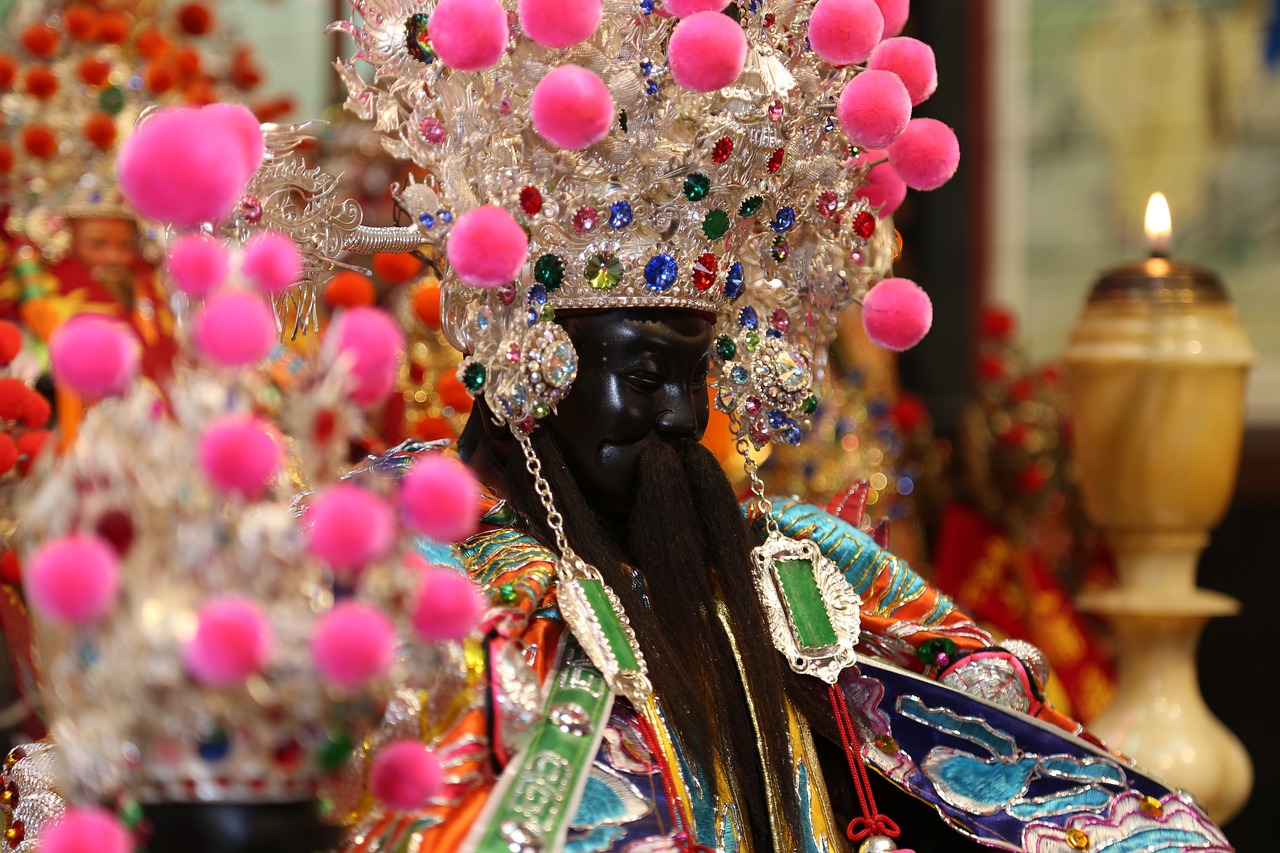
Practices for Personal Growth
When it comes to personal growth, Taoism offers a treasure trove of practices that can transform your life. These aren't just rituals; they're pathways to deeper understanding and harmony with the world around you. Imagine standing at a crossroads, and each path represents a different aspect of your journey. In Taoism, the practices you choose can guide you toward a fulfilling and balanced life.
One of the most profound practices in Taoism is meditation. This isn't your average sit-and-think kind of meditation; it's about immersing yourself in the flow of the universe. By quieting the mind and focusing on your breath, you create a space where clarity and peace can thrive. It's like tuning into a radio station where the static fades away, leaving only the music of existence. Regular meditation allows you to connect with the Tao, the ultimate principle of the universe, and helps you understand your place within it.
Another powerful practice is Tai Chi, often described as "meditation in motion." This ancient martial art combines graceful movements with deep breathing, promoting not only physical health but also mental clarity. Picture yourself moving like water—fluid, adaptable, and strong. Tai Chi teaches you to respond to life's challenges with grace rather than force, embodying the principle of Wu Wei or non-action. As you practice, you’ll find that your body and mind become more attuned to the rhythms of nature, enhancing your overall well-being.
In addition to meditation and Tai Chi, journaling can be an invaluable tool for personal development. Writing down your thoughts, feelings, and experiences provides a mirror to reflect upon your inner world. It’s like shining a flashlight into the depths of your mind, illuminating areas that need attention and understanding. By regularly journaling, you can track your growth, recognize patterns in your behavior, and set intentions for your future. This practice encourages self-discovery and helps you align more closely with the Tao.
Moreover, engaging with nature is a fundamental aspect of Taoist practice. Spending time outdoors, whether it’s hiking in the mountains or simply walking in a park, allows you to connect with the natural world. Nature teaches us invaluable lessons about balance, resilience, and the cycles of life. When you observe a tree shedding its leaves in autumn, you’re reminded of the beauty of letting go. By respecting and learning from nature, you can cultivate a deeper understanding of yourself and your place in the universe.
To sum it up, the practices of meditation, Tai Chi, journaling, and connecting with nature form a holistic approach to personal growth in Taoism. Each practice encourages you to look inward, fostering a sense of peace and understanding that can profoundly impact your life. As you embark on this journey, remember that personal growth is not a destination but a continuous process—one that invites you to embrace the flow of life and live in harmony with the Tao.
- What is the main goal of Taoist practices? The primary goal is to achieve harmony with the Tao, leading to a fulfilling and balanced life.
- Can anyone practice Tai Chi? Absolutely! Tai Chi is suitable for all ages and fitness levels, making it accessible for everyone.
- How does meditation help in personal growth? Meditation enhances self-awareness, reduces stress, and fosters a deeper connection with the universe.
- Is it necessary to be in nature to practice Taoism? While not strictly necessary, engaging with nature enriches your understanding of the Tao and promotes inner peace.
Frequently Asked Questions
- What is Taoism?
Taoism is an ancient Chinese philosophy founded by Lao-tzu, emphasizing living in harmony with the Tao, or the natural order of the universe. It encourages a deep connection with nature and promotes balance and simplicity in life.
- Who was Lao-tzu?
Lao-tzu, often considered the father of Taoism, was a philosopher and writer in ancient China. His teachings are compiled in the "Tao Te Ching," a foundational text that outlines the principles of Taoist thought.
- What does 'Tao' mean?
The term 'Tao' translates to 'the Way' and represents the ultimate principle that underlies and unifies the universe. It signifies a path or flow that one should align with to achieve harmony and balance in life.
- What is Wu Wei?
Wu Wei, meaning 'non-action' or 'effortless action,' is a core concept in Taoism. It encourages individuals to go with the flow of life rather than forcing things, allowing for a more natural and harmonious existence.
- How can I live in accordance with the Tao?
Living in accordance with the Tao involves embracing simplicity, being mindful of your actions, and cultivating a deep respect for nature. Practices such as meditation, mindfulness, and Tai Chi can help align your life with Taoist principles.
- How does nature influence Taoism?
Nature is seen as a teacher in Taoism, providing valuable lessons about balance, change, and the interconnectedness of all things. Observing natural phenomena can deepen one's understanding of the Tao and enhance spiritual growth.
- What are some practices for personal development in Taoism?
Taoism offers several practices for personal growth, including meditation, Tai Chi, and Qigong. These practices promote inner peace, self-awareness, and a greater connection to the world around you.
- Can Taoism be applied in modern life?
Absolutely! The principles of Taoism, such as harmony, balance, and simplicity, can be applied to modern life to reduce stress and enhance well-being. Many people find that Taoist practices help them navigate the complexities of contemporary living.












